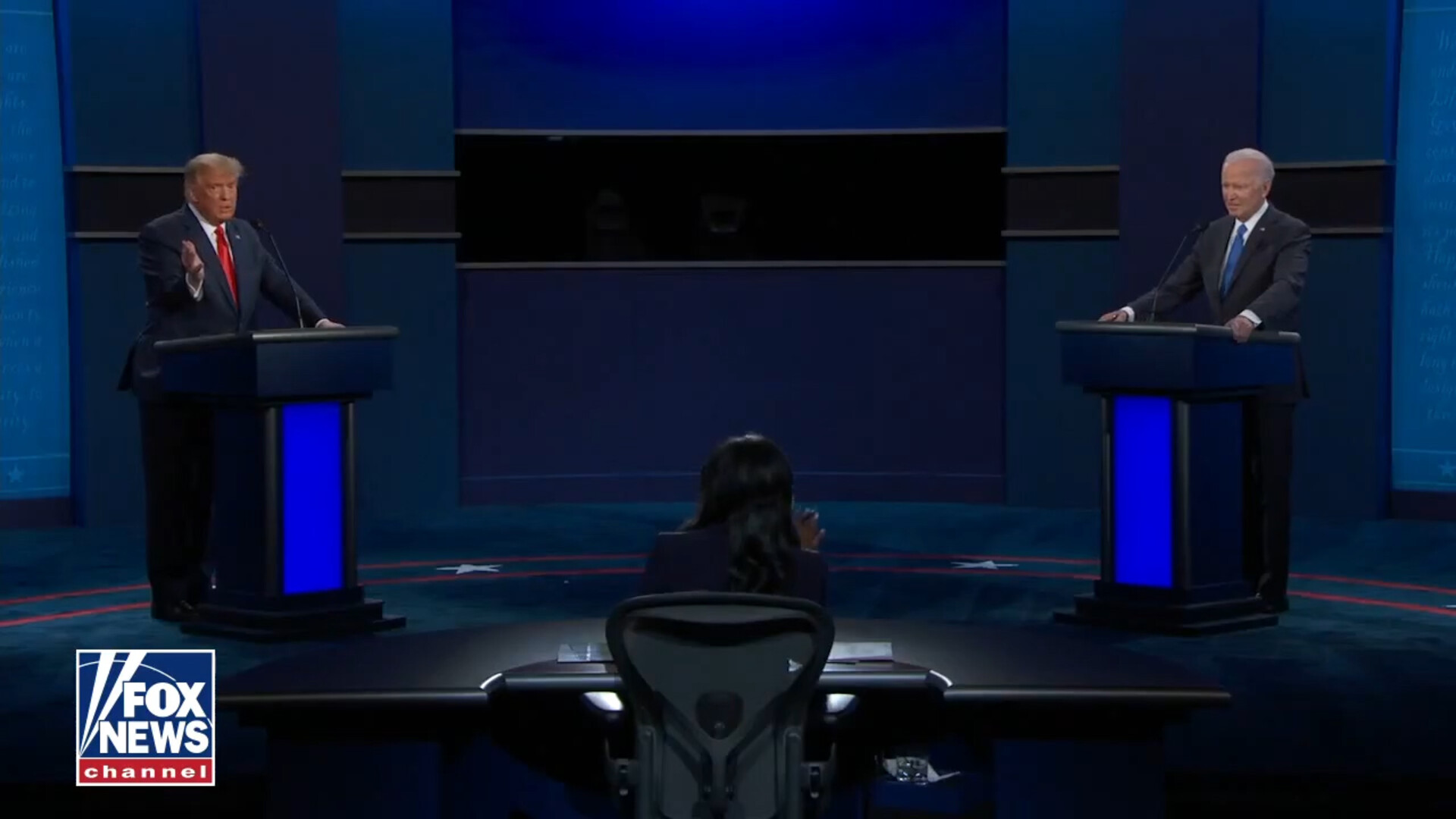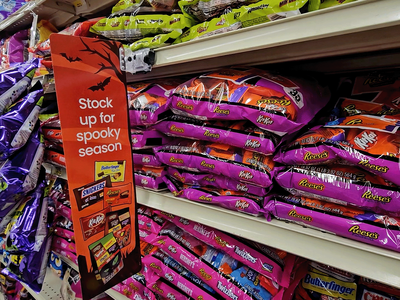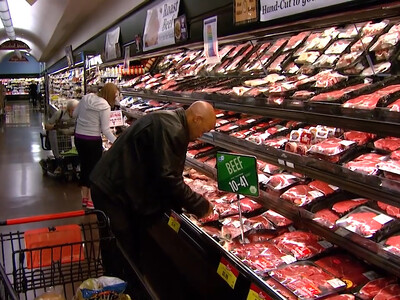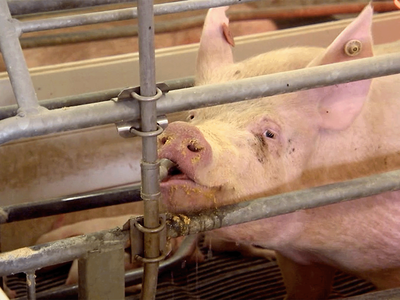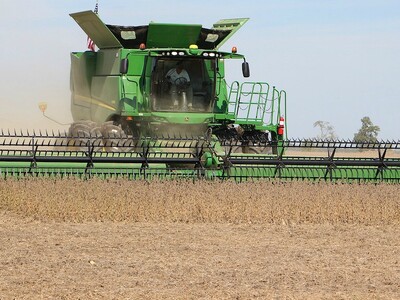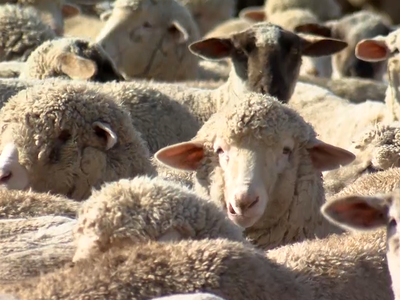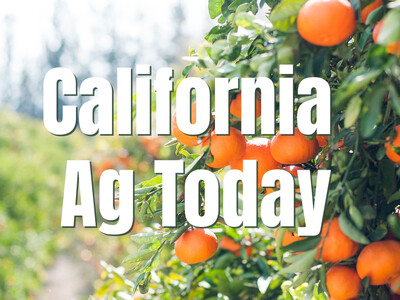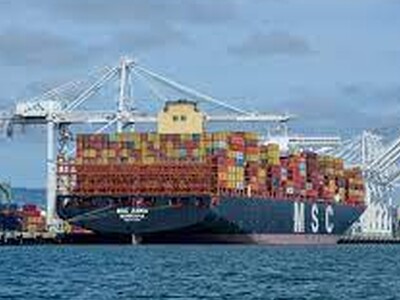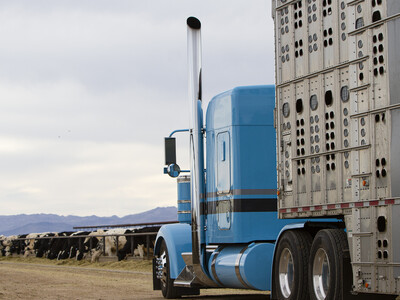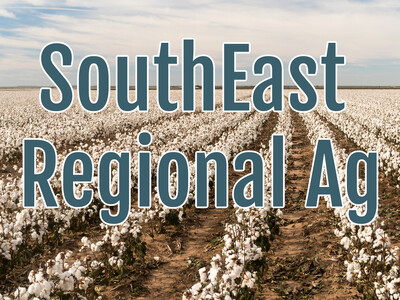Farmers Get Mentioned during Final Presidential Debate
A presidential election that once seemed like an eternity is now in the final full week of campaigning, and farmers must make the decision whether they are better off now than they were four years ago.Agriculture has gone through four volatile years of trade wars, exacerbated by extreme weather events and a year wracked by COVID-19 that devastated livestock markets.
And yet, sales to China are recovering, and recent market moves also provide a more positive mindset about agricultural markets for the 2020-21 marketing year. Not only are farmers getting another round of aid in the Coronavirus Food Assistance Program 2 (CFAP 2), but futures and cash prices for cattle, hogs, corn, soybeans and wheat have largely trended upward this fall. DTN's National Soybean Index is just under $10.21 a bushel, the highest level since July 2016. The DTN National Corn Index is at $3.94 a bushel, the highest level in more than a year. The Hard Red Winter Wheat Index hit $5.44 a bushel this week, its highest level in more than two years.
Rising commodity prices going into an election are a positive influence for incumbents in major agricultural areas because they offer a sense of optimism that goes beyond the farmers, said Steffen Schmidt, a political science professor emeritus at Iowa State University.
"Most of Iowa is not directly agriculture. We have a lot of banking, insurance, manufacturing, services and other things, but when farm prices strengthen, there is an overall optimism that begins to affect everyone," Schmidt said. "As farmers start doing better, it looks like the economy of the state is firming up. It just makes people who have nothing to do with agriculture feel good. And that can be very helpful to incumbents."
Glyndon, Minnesota, farmer Ray Johnson supports President Donald Trump and even hosted Vice President Mike Pence on his farm last year to promote the U.S.-Mexico-Canada Agreement (USMCA). He noted Pence was attentive and aware of all the issues facing farmers and businesses.
"You know, there's always some things you like and dislike about every administration," Johnson said. "This administration has some programs that they have done that I believe have helped rural Minnesota, and being a farmer, that's very much appreciated."
Like a lot of farmers, Johnson was able to get the crop out a lot earlier this fall. Johnson said yields for area farmers weren't as good as expected, but the harvest price increases are a positive development.
"Everybody is welcoming the rise in prices. Unfortunately, it seems like it comes at somebody's expense right now with the weather that occurred in Iowa and neighboring states," Johnson said.
Minnesota has been considered a battleground state, though recent polling largely shows former Vice President Joe Biden is favored. In 2016, Trump lost Minnesota by 44,759 votes out of 2.7 million votes cast. Rural Minnesota voted heavily in favor of Trump.
The 2020 DTN/Progressive Farmer Zogby Analytics Pulse of Rural America Poll released in late September polling rural voters showed Trump leading Biden 50% to 33% at the time with 11% of rural residents still undecided. Polls in other agricultural and rural media show similar trends with strong farmer support for the president.
Overall, the polling website FiveThirtyEight.com showed Biden leading in Midwest battleground states such as Michigan, Minnesota and Wisconsin, while Trump is leading in Iowa and Ohio.
Dominic Marchese, who raises 100% certified grass-fed beef in Farmdale, Ohio, started Ohio Farmers for Trump on Facebook in 2016, before it looked like Trump had a real shot at winning the presidency. Marchese said Trump's comments about the loss of manufacturing four years ago influenced him. The town Marchese grew up in is "a shell" now compared to when he grew up. "There were hundreds of businesses that made things, and they're all gone following these trade deals," Marchese said.
Marchese said he thinks Trump will carry Ohio again and believes Trump's support has increased. Farmers will continue to back the president, he said. "They're still supportive of the guy, and in many cases, they're saying even if they gotta take a hit with what he did in China, in the long run, we're going to be better off."
The president, though, also has some vocal critics. Nearly every week, the group Rural America 2020 hosts calls with farmers and rural residents frustrated over Trump's policies.
Doug Thompson, a corn and soybean farmer from north-central Iowa, criticized Trump's trade moves on a Rural America 2020 webcast, saying the Trump administration made farmers dependent on government aid. Thompson rattled off the acronyms of government aid -- MFP, CFAP 1, CFAP 2.
"Those are just program after program that have been coming in to pay for failed administration policies," Thompson said. "Our markets have slipped away by the trade war that has occurred with our allies and China."
USDA's Economic Research Service in September forecast farm income at $102.7 billion for 2020, but $37.2 billion (36%) will come from direct government aid because of COVID-19 and ad hoc disaster assistance.
Thompson added, "Farmers were the tip of the sword, and we were told, if you will, be patriots and look forward and back the administration's position. That all has happened while Brazil and Argentina have taken over our soybeans sales to China."
Michigan farmer Tim Boring, another Rural America 2020 member, challenged the president's agricultural policies Friday as Agriculture Secretary Sonny Perdue was visiting the state.
"When I look to what's happened in my community the past four years, I see farms deeply in debt and increasingly reliant on federal government subsidies," Boring said. "Agriculture needs to operate on free-market principles and in open markets, so we can actually increase profits and not rely on federal payments. Rural America is not in better shape than we were four years ago. It's time to figure out a better path forward for American agriculture."
In Thursday night's final presidential debate, the only mention of farmers came up in arguments over how to deal with China. Trump pointed to the tariffs he imposed and maintained the position that money going to farmers came from those tariffs. "I just gave $28 billion to our farmers," Trump said.
Biden retorted, "Taxpayer money."
Trump added, "You know who got the money, our great farmers."
Source: DTN


